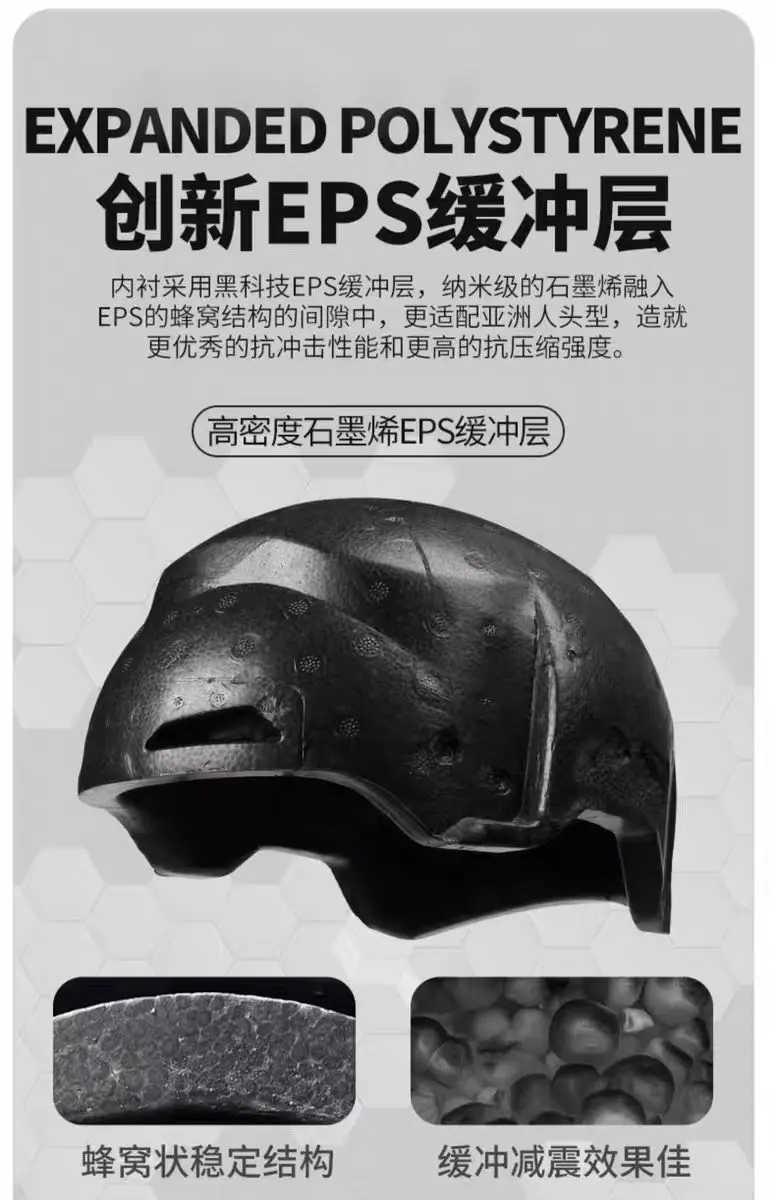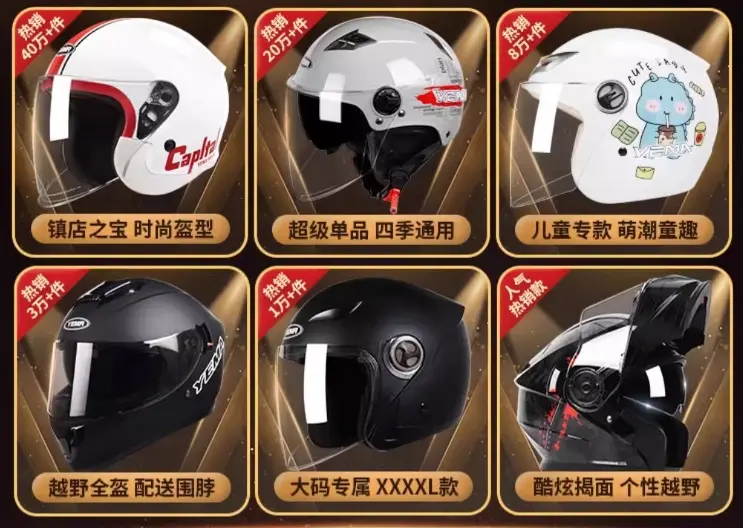The EPS buffer layer of a helmet is a crucial part inside the helmet. It plays an important protective role when the head is impacted. It is precisely with this that Yema helmets can protect our heads, mitigate the impact force of an instant collision, and ward off critical and life-threatening injuries. The following is detailed information about the EPS buffer layer of helmets:
Full Name of EPS: EPS stands for Expanded Polystyrene, which is a lightweight foam material commonly used inside helmets.
Structure: The EPS buffer layer is a layer of foam material inside the helmet, usually covered within the inner shell of the helmet. It has a dense cellular structure, similar to foam plastic. However, during the helmet manufacturing process, it will form many small air bubbles through heating and expansion, thus providing excellent energy absorption performance.

Function: The main function of the EPS buffer layer is to absorb impact force and reduce the risk of head injuries. When the head suffers an impact, the EPS buffer layer will compress and deform, dispersing the impact force over a large area of the head and reducing the pressure on the head. This helps prevent concussions, skull fractures, and other serious injuries.
Single-use: The EPS buffer layer is usually for single-use because once an impact occurs, it will be damaged. Even a minor impact may affect the EPS buffer layer inside the helmet. Therefore, once a Yema helmet has experienced a major impact, the helmet should be replaced.
Multi-layer Design: Some helmets adopt a multi-layer EPS design, which means they have multiple layers of EPS buffer layers inside, and each layer has a different density to provide a higher level of impact absorption and safety.
Quality Control: The quality control of the EPS buffer layer is crucial for the performance of the helmet. Yema helmets ensure that the EPS material has a high density and uniform expansion to guarantee consistent protective performance.
Maintenance: To maintain the performance of the helmet, avoid exposing the helmet to high temperatures or sunlight because the EPS material may be damaged as a result. Regularly check the helmet for any obvious damage or cracks, and ensure that the EPS buffer layer inside the helmet is intact.
In conclusion, the EPS buffer layer of a helmet is a key safety component. It protects the head from impact injuries through its energy absorption mechanism. Therefore, it is crucial to purchase and correctly wear a reliable helmet for head safety. If the helmet is damaged after an accident or impact, it should be replaced immediately because a damaged EPS buffer layer can no longer provide sufficient protection.



